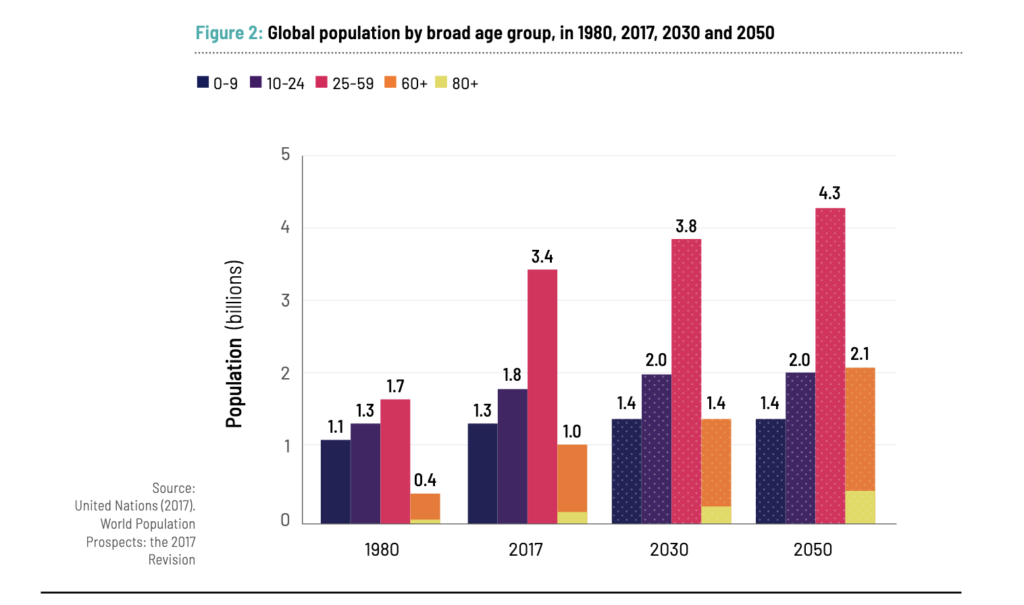Boomers in a Gen Z World: A Perspective on Senior Markets

The Media Logic Financial Services blog regularly features content on understanding generational cohorts: Millennials, Gen Z, and Alphas. Although Boomers are less frequently our primary focus, our Healthcare Industry blog is rich with Medicare marketing and senior content. Recently, Ipsos research captured our attention with its updated insights on the value of Boomers to brands, new senior segments, and marketing implications.
Ipsos appraises the current state of Boomer marketing:
“….the truth is that older adults are largely ignored today….airbrushed out of popular media, rarely targeted, with only 1.5% of TV characters aged 65+ mostly in minor roles, and just 8% of ads globally in the past three years featuring a mature adult in a primary role…”
To help brands get on track, they provide results from a 2024 survey combined with advertising tracking insights to enhance understanding of seniors and how best to connect with them.
Why Should Brands Care?
The future depends upon preparing for an aging population. The global population of children aged 0-9 is expected to remain relatively stable, increasing from 1.3 billion in 2017 to 1.4 billion by 2050. Compare this modest growth to the population aged 60 and over, which is projected to double from 1 billion in 2017 to 2.1 billion by 2050. Even if this demographic isn’t a primary focus today, brands should consider how to position their marketing in a “future world where one out of every three individuals will be 60 years and older.”

Do Boomers Spend and Are They an Opportunity?
This question is crucial for banks, credit unions, payment issuers, and fintech companies. According to conventional thinking and data, senior adults are more likely to focus on purchasing necessities:
- 30% are more likely than younger adults (ages 28-43) to say they “usually buy only the things they need.”
- 20% are more likely to “try to keep life simple as far as possessions are concerned.”
- 38% express pleasure in buying things, compared to 59% of younger adults.
However, actual consumption patterns suggest that older consumers do indeed spend. In response to these findings, Ipsos turns to the Boston Consulting Group to further explore the spending question: In twelve of the major world economies, individuals aged 50 to 70 are responsible for 27% of spending, amounting to $7 trillion annually. The share of spending by Boomers varies by country; in the UK, for instance, over 50% of spending is attributed to consumers over 50, though they make up only one-third of the population.
Clearly, older adults are spending but they may not be spending on everything. The Boomer cohort, Ipsos reminds us, is not monolithic and any spend discrepancy must be looked at in a refined way. Ipsos has done the important work of identifying and defining Senior segments by asking who among older adults are spending and on what?
Segments Identified
To market successfully to older adults, businesses must avoid generalizations and adopt a targeted approach. Ipsos conducted a study involving 1,500 consumers aged 60 and over in four countries, aiming to better define and understand potential segments by uncovering Boomers’ feelings about their financial situations and their attitudes towards consumption, aging, food, and beauty. Four distinct segments emerged, consistent across all countries, although their relative sizes varied geographically:
Simple Contentment
- Comprises older adults who report being content with life.
- They feel calm, financially secure, and prefer to keep life simple when it comes to possessions.
- They believe in aging gracefully.
- They value connections with family and friends.
- They would exercise if they had more time.
Strivers
- They are driven, consumeristic, and feel a need to look good in public.
- They feel financially secure, contrasting with the Simple Contentment segment.
- They enjoy purchasing items, believe possessions define them, and admire ownership of expensive cars, clothes, or homes.
- They want to exercise more if they had more time, likely driven by a wish to maintain their appearance.
Strugglers
- They feel stressed and are interested in having more access to mental health and well-being services.
- They do not feel financially secure and are concerned about insufficient retirement funds, exacerbated by a mismatch between their finances and consumeristic attitudes.
- They find pleasure in buying items and admire those who own expensive items.
Chill Indulgence
- Described as happy-go-lucky.
- They purchase only necessities.
- They are not concerned about how they appear in public and are not impressed by people who own expensive things.
- They enjoy the simple things in life e.g., good food but without consideration to whether the food is healthy or not.
- They would watch more TV if time allowed.
How This May Help Brands
Of course, there is no such thing as a typical older person. Like their younger counterparts, seniors vary in financial security and consumer attitudes. However, a key to effective advertising—and by extension, all marketing efforts—with this demographic is conveying a high level of empathy and creativity. This approach is effective across all senior segments. Taking it further, Ipsos highlights three fundamental pillars that, when employed by brands, result in positive connections with Boomers: empathy, context, and expectations.
Brands are advised to use these three pillars to identify products or services that can be aligned with individual segments. One of Ipsos’s actionable takeaway is: “Let’s not just sell them what we have or try to convince them to be something they don’t want to be.” Instead, brands should determine what the audience wants and tailor their products or services accordingly.
Supporting this approach, the Ipsos Creative Effect Index demonstrates that a combination of low creativity and low empathy in ads correlates with a -23% average ad performance. Conversely, ads that combine high creativity with high empathy see a +20% average ad performance.
For brands looking to improve their advertising targeted at Boomers—assuming a product/service addresses “wants”—must target marketing to individual segments leveraging the 3 pillars that are shown to unlock brand success:
- Acting with Empathy: Aligning with what is important to people.
- Integrating Context: Depicting what is happening in people’s lives and the world around them.
- Shaping Expectations: Managing what people think and know about the brand and category.
Moving One Giant Step Closer to Perennials
By improving current marketing strategies to include senior segments using the three pillars, brands not only enhance their inclusivity of seniors but also align themselves with something that is already taking place: the changing generational construct. As lifespans extends, the traditional, sequential model—childhood, education, work, retirement—is expected to transition to more fluid, non-linear life models.
For those interested in a deeper understanding of this evolution from current life stages, the Boston Consulting Group recommends The Perennials by thought leader Mauro Guillén. His work “unpacks a sweeping societal shift triggered by demographic and technological transformation. This shift will eliminate rigid categories and life stages reinforced by outmoded terms—Boomers, Gen X, Millennials, and Gen Z.” A multigenerational revolution is already underway, heralding a new era dominated by Perennials. Viewing and engaging seniors differently could be a first giant step in as the rigidity of generational categories falls away.






